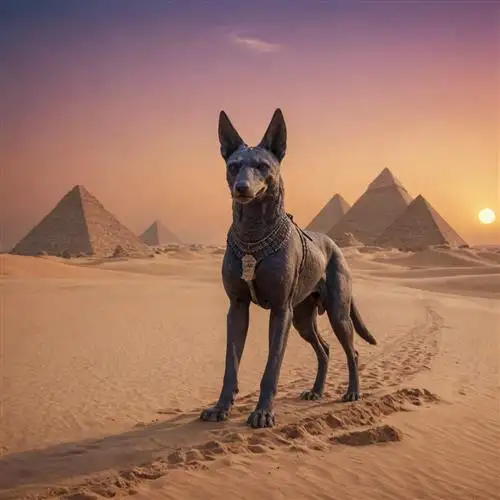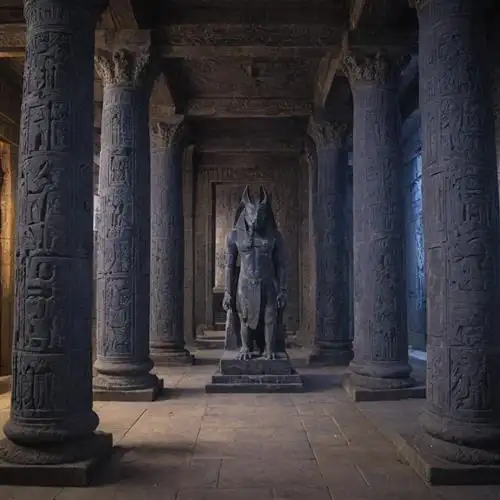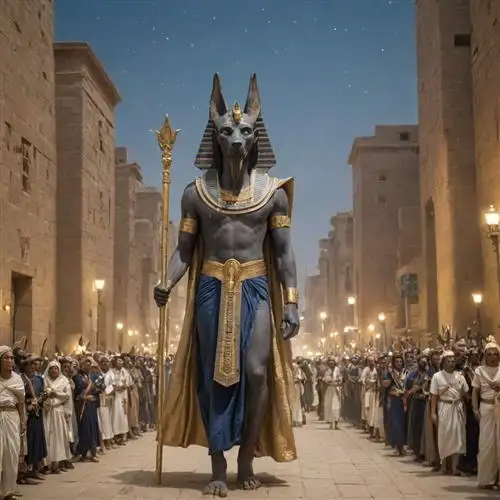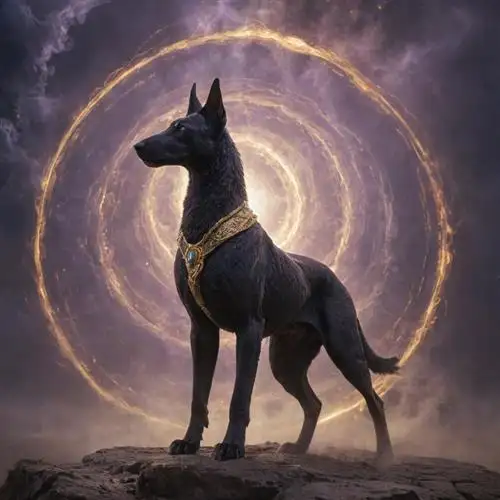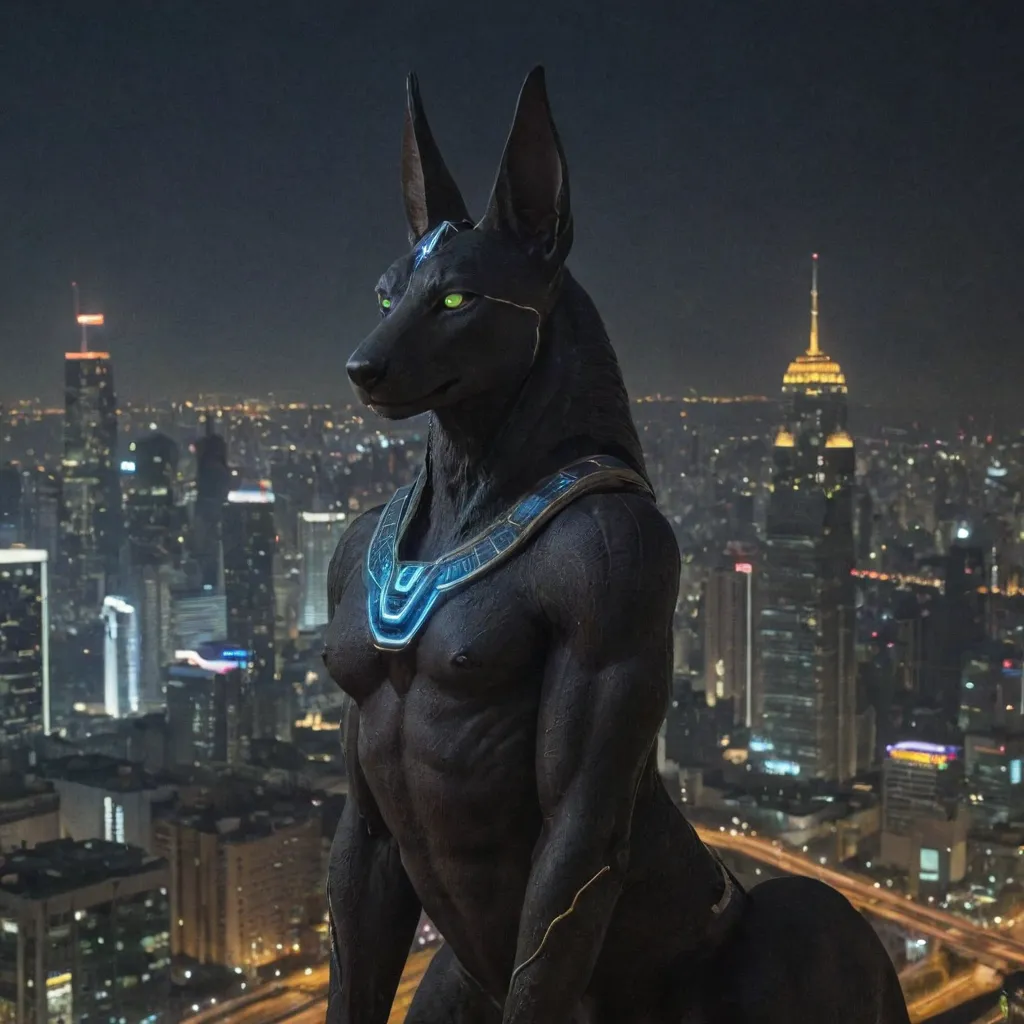
The Origins of Anubis
Anubis, the ancient Egyptian god associated with mummification and the afterlife, has a rich and intriguing history that can captivate the imagination of those interested in the mysteries of ancient civilizations. When delving into the origins of this iconic deity, we uncover a tapestry of beliefs, symbolism, and cultural significance that provide valuable insights into the beliefs and practices of the ancient Egyptians.
Anubis is believed to have emerged as one of the earliest funerary deities in ancient Egyptian mythology, with his origins dating back to the Pre-Dynastic period, around 3100 BCE. The jackal-headed god was initially associated with the necropolis, the ancient Egyptian burial ground, where he was revered as the patron of the dead and the guardian of the mummification process.
The association between Anubis and the jackal or dog-like creature is a source of much speculation and scholarly debate. Some scholars suggest that the jackal was chosen as Anubis' animal form due to the creature's scavenging behavior near burial sites, which was believed to be a sign of the god's involvement in the afterlife. Others propose that the jackal was selected due to its ability to navigate the liminal spaces between the world of the living and the dead, making it an appropriate representation of Anubis' role as a bridge between these realms.
In the early development of the Anubis cult, the god was often depicted as a jackal or a jackal-headed human figure, reflecting his dual nature as both a deity and a mediator between the mortal and divine realms. The jackal's keen sense of smell and its association with the necropolis further solidified Anubis' role as the guardian of the dead and the protector of the mummification process.
As the ancient Egyptian religious and funerary traditions evolved, Anubis' significance and iconography continued to expand. The god became closely associated with the embalming and mummification rituals, where he was believed to have overseen the preparation of the deceased for the afterlife. This included the critical process of the removal of the internal organs, which were then placed in canopic jars under the protection of Anubis and other funerary deities.
The importance of Anubis in the afterlife journey of the ancient Egyptians is further exemplified in the Book of the Dead, a collection of funerary texts and spells that guided the deceased through the challenges of the underworld. In these texts, Anubis is depicted as the one who weighs the heart of the deceased against the feather of truth, determining the fate of the soul in the afterlife.
Anubis Iconography and Symbolism
Anubis, the ancient Egyptian god of the dead, is often depicted with the head of a jackal or dog and the body of a human. This distinctive iconography holds immense symbolic significance in the rich tapestry of ancient Egyptian mythology and religious beliefs.
The jackal or dog-headed form of Anubis is believed to have originated from the observation of these scavenger animals, which were often found prowling around ancient Egyptian cemeteries and burial sites. The jackal was seen as a creature that navigated the liminal space between the world of the living and the dead, making Anubis an appropriate deity to preside over funerary rites and the afterlife.
The black color associated with Anubis is another important symbolic element. In ancient Egypt, the color black was linked to the fertile soil of the Nile River, as well as the color of the decomposing body. This connection to the cycle of life, death, and rebirth made black an appropriate color for Anubis, the god responsible for embalming, mummification, and guiding the dead to the afterlife.
Anubis is often depicted holding a was scepter, a symbol of power and authority, and a_ankh_, the ancient Egyptian symbol of life. These iconographic elements reinforce Anubis' role as a fundamental figure in the Egyptian funerary rituals, responsible for ensuring the safe passage of the deceased to the afterlife.
Additionally, Anubis is sometimes shown weighing the heart of the deceased against the feather of truth, a crucial step in the judgment of the dead in the Egyptian afterlife. This iconography symbolizes Anubis' role as the guardian of the dead, ensuring that the deceased have led a virtuous life and are worthy of entering the afterlife.
Anubis Roles and Responsibilities
Anubis, the ancient Egyptian god, was a complex and multifaceted deity with a vast array of roles and responsibilities. As the god of mummification and the afterlife, Anubis played a crucial role in the journey of the deceased through the underworld. Here are some of the key roles and responsibilities associated with this powerful deity:
Anubis was the primary god responsible for the embalming and mummification process. He was believed to oversee the intricate process of preserving the body, ensuring the soul's safe passage to the afterlife. This role made Anubis a central figure in the funerary rituals and practices of ancient Egypt.
Another important responsibility of Anubis was his role as the guardian of cemeteries and necropolis. He was believed to watch over the dead and protect their resting places from desecration or disturbance. Anubis was also responsible for guiding the souls of the deceased through the underworld and ensuring their successful judgment and passage to the afterlife.
In the complex mythology of ancient Egypt, Anubis was also associated with the weighing of the heart ceremony, a crucial step in the afterlife journey. During this ritual, the heart of the deceased was weighed against the feather of truth, and Anubis was tasked with ensuring the accuracy and fairness of this judgement.
Anubis was further revered as a deity of transformation and rebirth. He was believed to have the power to guide the deceased through the process of transformation, enabling them to be reborn into the afterlife. This aspect of Anubis' role reinforced his importance in the Egyptian belief system and the journey of the soul after death.
Anubis in Ancient Egyptian Mythology
Anubis, the enigmatic jackal-headed deity, has been a central figure in the rich tapestry of ancient Egyptian mythology for millennia. As the god of embalming and the afterlife, Anubis played a crucial role in guiding the deceased through the complex journey to the afterlife. His importance cannot be overstated, as he was one of the most revered deities in the Egyptian pantheon.
In ancient Egyptian mythology, Anubis was believed to be the son of the goddess Nephthys and either the god Set or Ra, depending on the specific myth. His primary domain was the necropolis, the sacred city of the dead, where he oversaw the process of mummification and the preparation of the deceased for their journey to the afterworld. Anubis was responsible for weighing the heart of the deceased against the feather of truth, a critical step in determining the individual's worthiness to enter the realm of the afterlife.
The jackal-headed figure of Anubis was not merely a symbolic representation, but a reflection of his deep connection to the natural world. Jackals were often seen scavenging around the edges of cemeteries and graveyards, leading the ancient Egyptians to associate Anubis with the guardianship of the dead. His black color was also significant, as it was believed to represent the color of the fertile soil along the Nile River, which was essential for the rebirth and regeneration of life.
Anubis's role in the afterlife was not limited to the mummification process. He was also responsible for guiding the deceased through the perilous underworld, ensuring their safe passage to the realm of the dead. In this capacity, Anubis was often depicted as standing at the threshold of the underworld, ready to greet the newly arrived souls and assist them in navigating the treacherous journey ahead.
The 7 Surprising Facts About the Symbolism of Anubis article delves deeper into the rich symbolism and cultural significance of this enigmatic deity, exploring the various aspects of his divine nature and his enduring legacy in ancient Egyptian mythology.
Anubis in Modern Culture and Worship
The enduring legacy of the ancient Egyptian god Anubis continues to captivate modern audiences. This jackal-headed deity, associated with the afterlife, mummification, and the protection of the dead, has transcended the boundaries of ancient religion and found a place in various facets of contemporary culture and spirituality.
In modern occult and esoteric traditions, Anubis is often revered as a powerful guide and intermediary between the physical and spiritual realms. Many neo-pagan and Wiccan practitioners incorporate Anubis into their rituals and invocations, seeking his wisdom and guidance in matters of death, transformation, and the journey of the soul. Anubis is frequently depicted in ceremonial robes and masks, evoking the sacred rituals and mysteries of ancient Egypt.
The enduring popularity of Anubis is also evident in the realm of popular culture. The god's distinctive jackal-like visage has become a recognizable symbol, appearing in various mediums such as film, television, video games, and comic books. In these depictions, Anubis is often portrayed as a guardian of the dead, a psychopomp guiding souls to the afterlife, or a figure of power and mystery.
One notable example is the character of Anubis in the "Stargate" franchise, where he is depicted as a powerful and enigmatic alien being with a connection to ancient Egyptian mythology. This representation has helped to maintain Anubis' relevance and appeal to modern audiences seeking a blend of science fiction and ancient mysticism.
Additionally, Anubis has found a place in the world of modern art and design. His image has been used in various forms of visual art, from abstract interpretations to detailed, realistic renderings. Anubis-inspired tattoos, jewelry, and other decorative items have also become popular among those drawn to the deity's symbolic power and cultural significance.

